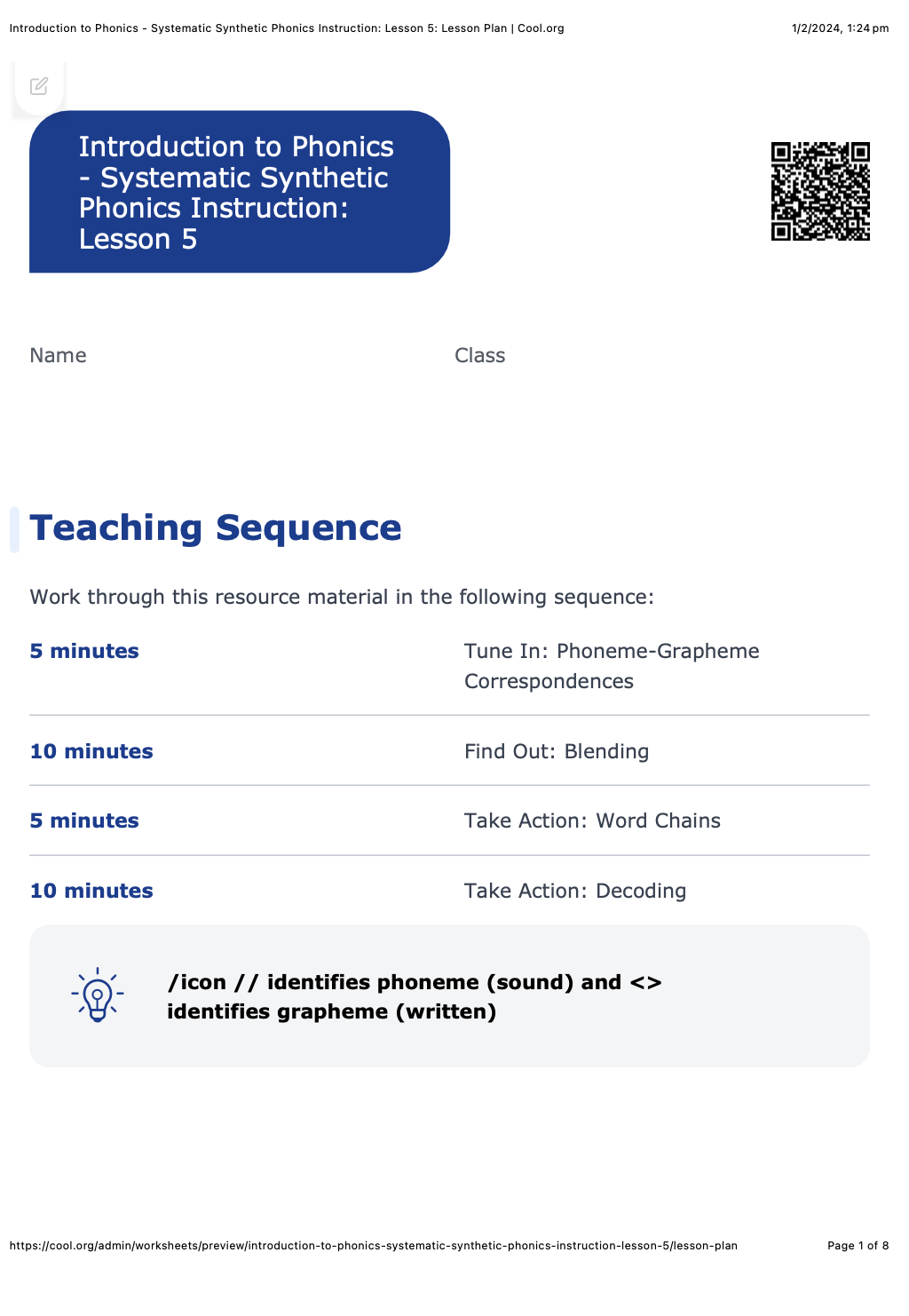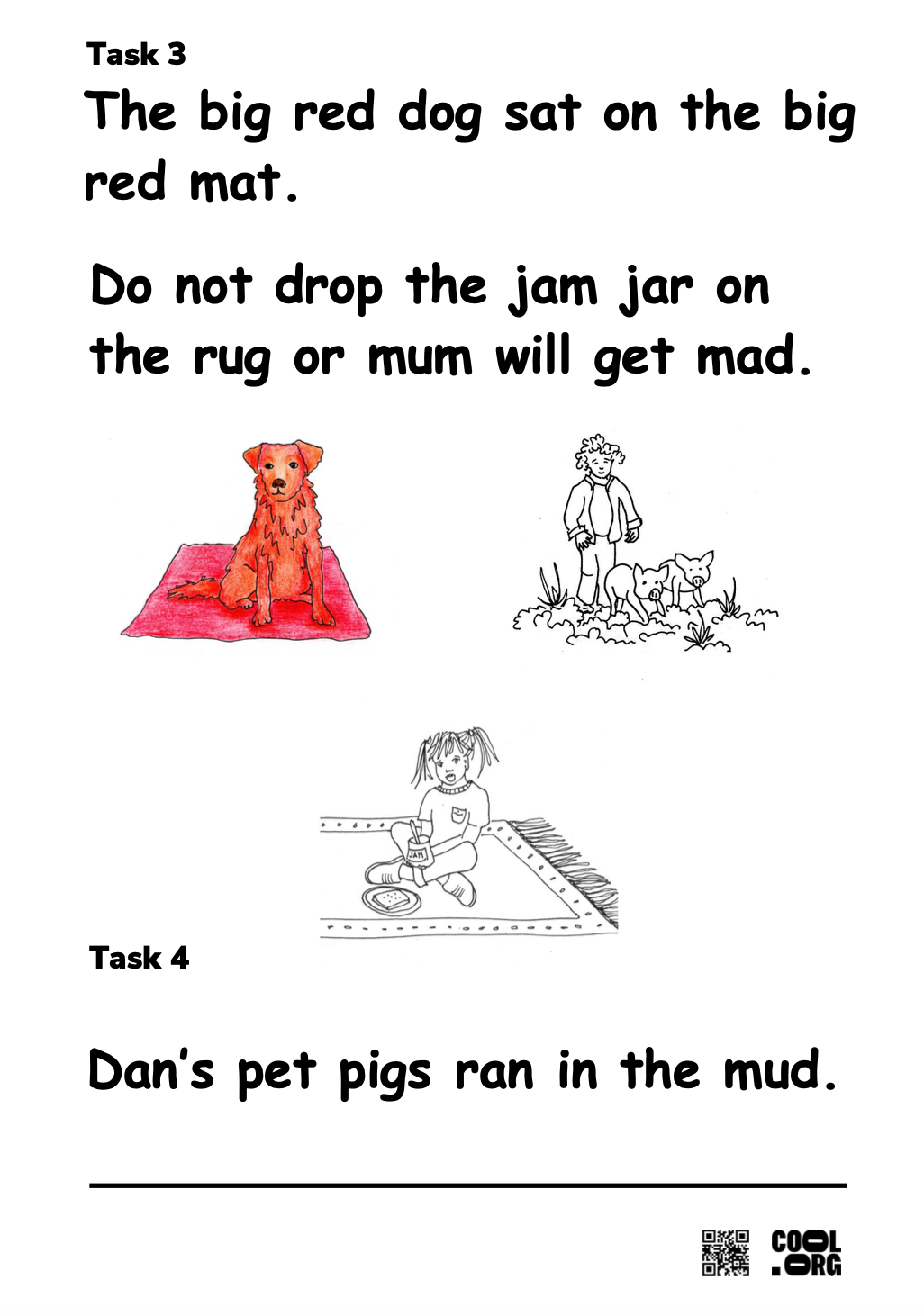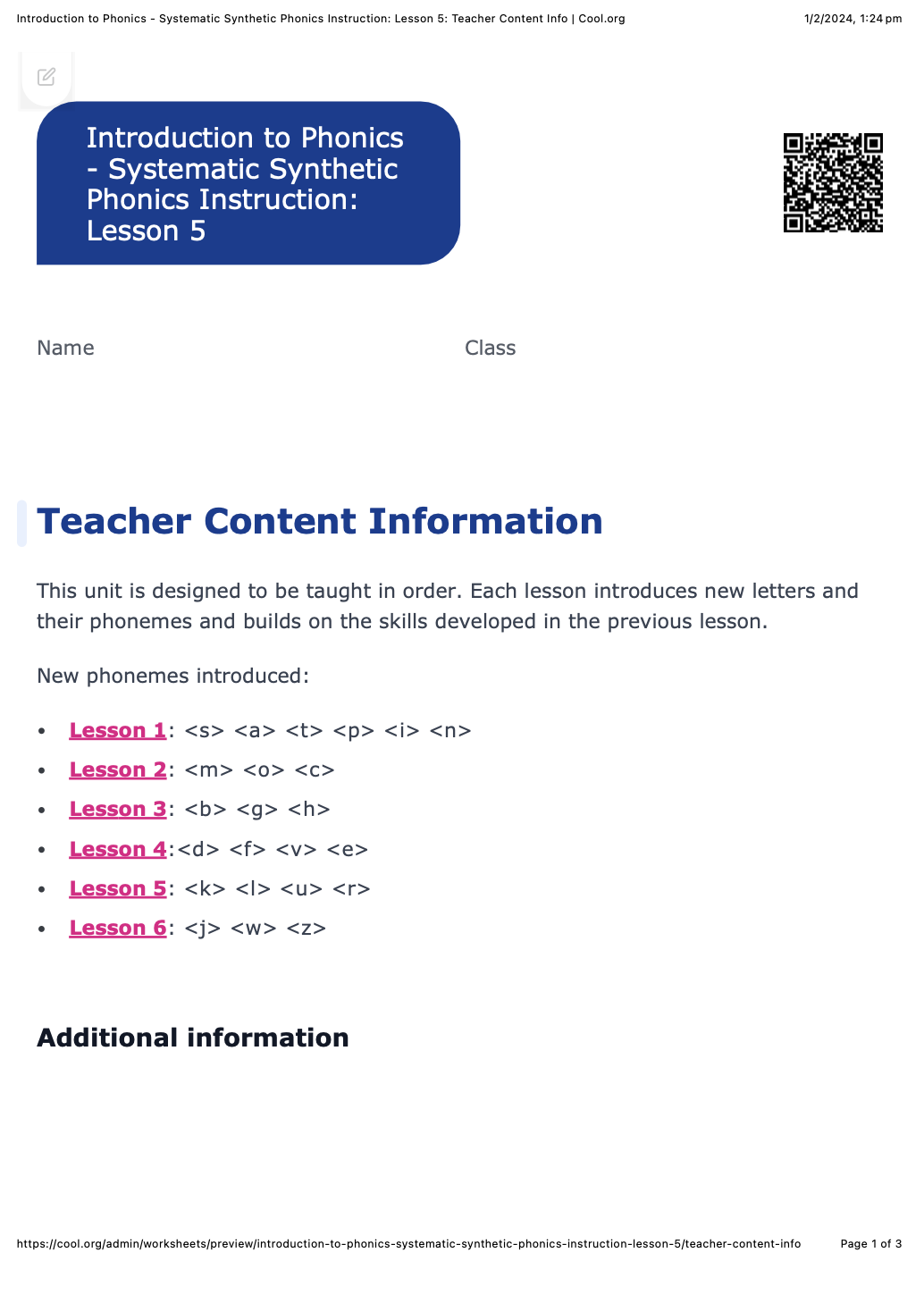Lesson summary
This lesson sequence will provide a systematic synthetic approach to phonics instruction. Engaging activities and targeted exercises will assist students in discovering the mechanics of decoding and provide the essential skills and practice necessary to build automaticity in word recognition.
Learning intentions:
Students will...
- blend and segment single-syllable consonant-vowel-consonant (CVC) words.
Success criteria:
Students can...
- segment and pronounce the most common sound for the phonemes
- blend the graphemes to produce CVC words.
Lesson guides and printables
Curriculum links
Select your curriculum from the options below.
Lesson details
Skills
This lesson is designed to build students’ competencies in the following skills:
- adaptability
- critical thinking
- communication
- curiosity
- reflection
Curriculum Mapping
Australian Curriculum (v9.0) content descriptions - English
Students learn to:
- orally blend and segment single-syllable spoken words; isolate, blend and manipulate phonemes in single-syllable words (phonological awareness) (AC9EFLY10).
- recognise and name lower-case letters (graphemes) and know the most common sound that each letter represents (AC9EFLY11).
- write consonant–vowel–consonant (CVC) words by representing sounds with the appropriate letters, and blend sounds associated with letters when reading CVC words (AC9EFLY12).
General capabilities: Critical and Creative Thinking, Literacy
Relevant parts of Foundation achievement standards:
English - Foundation Year: They read, view and comprehend texts, making connections between characters, settings, and events, and to personal experiences. They identify the language features of texts, including connections between print and images. They name the letters of the English alphabet and know and use the most common sounds (phonemes) represented by these letters (graphemes). They read words, including consonant–vowel–consonant words and some high-frequency words.
UN Sustainable Development Goals
- Target 4.6: By 2030, ensure that all youth and a substantial proportion of adults, both men and women, achieve literacy and numeracy.
Resources Required
- Sticky notes (individually labelled with <s> <a> <t> <p> <i> <n> <m> <c> <o> <b> <g> <h> <d> <f> <v> <e> <d> new: <k> <l> <u> <r> ) or magnetic letters/cards
- Whiteboard to demonstrate
- Whiteboard for each student
- Whiteboard eraser for each student
- Whiteboard marker for each student
Additional Info
Level of teacher scaffolding: High level - explicit teaching required
Related Professional Learning
Teaching Systematic Synthetic Phonics With Nicole Case
Quick summary: Upskill your systematic synthetic phonics and literacy skills with our professional learning for teachers session, a research-based methodology acclaimed for its success in teaching reading. This session will guide educators through the core principles and best practices of phonics instruction, focusing on enhancing decoding skills, reading fluency, and overall literacy.




Welcome back!
Don't have an account yet?
Log in with:
Create your free Cool.org account.
Many of our resources are free, with an option to upgrade to Cool+ for premium content.
Already have an account?
Sign up with:
By signing up you accept Cool.org's Terms and Conditions(Opens in new tab) and Privacy Policy(Opens in new tab).